Perspectives Blog
Abusability Testing
Today’s world, with digital technology everywhere, inspires people to pay attention to usability. Usability testing is the art and science of measuring if someone, who has some task, can use a thing to get their task done. Can a person do a thing? That’s usability.And remember, usability is not pass/fail. It’s a matter of degree, so things are relatively more usable. Or less. We can’t define an ultimate end point — something that’s usable can always be made more so.

Today’s world, with digital technology everywhere, inspires people to pay attention to usability.
Usability testing is the art and science of measuring if someone, who has some task, can use a thing to get their task done. Can a person do a thing? That’s usability.
And remember, usability is not pass/fail. It’s a matter of degree, so things are relatively more usable. Or less. We can’t define an ultimate end point — something that’s usable can always be made more so.
Here’s an assumption that product and UX teams make frequently and implicitly: we assume that ‘good’ people are trying to accomplish ‘good’ and proper tasks. While a task might discover that a person is sloppy or careless, we don't usually consider them to be bad people.
But what about bad people? And what about bad — or evil — tasks?
What many designers and entrepreneurs are not paying enough attention to is ‘abusability.’
Abusability is a made-up word. But it’s a real concept.
What craven, trolling, nefarious, immoral, or illegal tasks could a person do with your software or service? And how could you you mitigate these bad outcomes or frustrate ill intent?
Another way to describe abusability is the art and science of keeping bad actors from weaponizing your platform or product.

Abusability comes from the information security world and it was brought into wide use 2019 by the former FTC chief technologist Ashkan Soltani in a talk he gave at a security conference.
Also note that starting to think about abusability will mean your team needs to consider new stakeholders. Abusability might include user-to-user behaviors (bullying, trolling, spamming, fraud), but it might also include non-users. Or ‘the public.’ There's a difference between a single Facebook user harassing or stalking another user on the platform versus state-sponsored disinformation campaigns and their impact manipulating the public at large.
A practical thing you can do to start thinking about abusability a short workshop with your team and stakeholders. The Virt•eu project is an EU-backed program that’s trying to build “practical tools to help technology developers think and talk about ethics in new and hopefully more productive ways.” They have a workshop toolkit that's focused on framing conversations among a product or design team. And also the broader set of stakeholders that design teams must consider — while manay design teams have a prospects and customer personas, the team might not have created a non-user who could be a target of malicious behavior.
Get inspired to think deep! Increase your platform's usability, but reduce its abusability.

